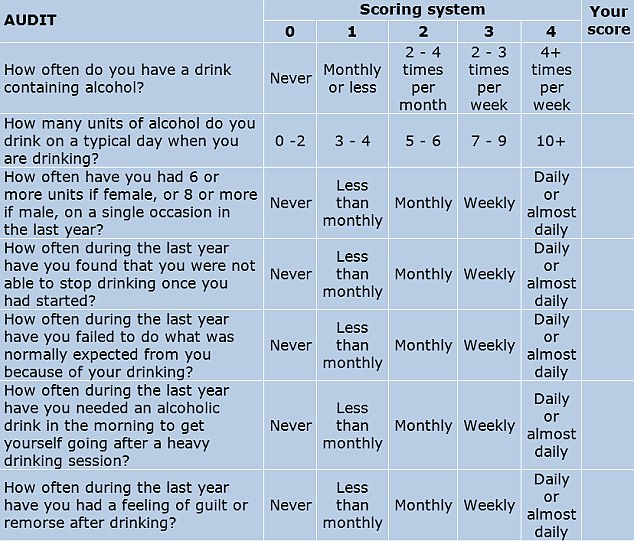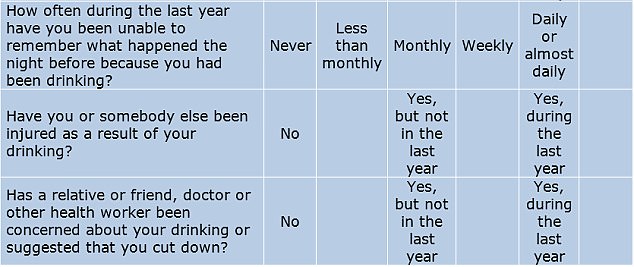Phrases like ‘rose-all-day’ on social media are ‘normalising’ boozing among women, researchers say
‘Wine o’clock’ may seem like a treat at the end of the day.
But the burgeoning social media trend may be to blame for the rising number of binge drinkers among younger women, experts warn.
“Wine mum” and “rose-all-day” culture have only normalized excessive drinking, they claimed.
The American researchers found that women in their 30s are now 60 percent more likely to have a problem relationship with alcohol than women of the same age in the 1990s.
Rates were highest among women who are childless and have delayed motherhood.
The US-based researchers found that women in their 30s are now 60 percent more likely to have a problem relationship with alcohol than women of the same age in the 1990s
Boston University experts gathered data from a study called Monitoring the Future, which involved nearly 10,000 women.
Participants completed the survey at the age of 35 between 1993 and 2019.
They provided information on their parental status, age of first aging and drinking habits.
Binge drinking was assessed by asking participants how often they had had five or more drinks in the past two weeks.
Symptoms of alcohol use disorder (AUD) over a five-year period were also assessed based on survey responses.
Write in the journal Addictionresearchers said the findings indicate that women who turned 35 between 2018 and 2019 were nearly 60 percent more likely to start drinking or report symptoms of alcohol use disorder (AUD) compared to women who turned 35 between 1993 and 1997.
They said the results suggest that women who had not had children by age 35 “are the subgroups of women most at risk for binge drinking and AUD symptoms.”
The latest data from the Office for National Statistics suggests that women are waiting longer and longer to start a family, with the median age of a mother in the UK now approaching 31 (30.9).
By comparison, in the 1990s it was around 28.
The findings underline the need to address excessive drinking among all women, but especially among this growing group of women without children, they added.
Senior author Professor Katherine Keyes, an epidemiologist at Columbia University, said: ‘Messages from the alcohol industry around drinking for stress relief and enjoyment have always been part of the industry’s advertising strategy.
And we’ve seen this popping up on social media platforms, especially targeting people who are older.
“Promoting alcohol consumption for mothers to cope with the stress of motherhood in Facebook and Instagram groups have common hashtags such as #winemom, #sendwine and #mommyjuice.”
She added, “At the same time, there’s been a rapid proliferation of alcohol products aimed at middle-aged women — such as low-calorie seltzers, pink drinks, and expressions like all-day rosé.”

Data from a 2022 Organization for Economic Co-operation and Development (OECD) report found that Britons drank 9.7 liters of pure alcohol per adult in 2020 – 0.1 less than the EU average.
Co-investigator Professor Rachel Sayko Adams, professor of health law, policy and management at Boston University, said: ‘As more women are delaying having children in the US, a growing proportion of women are in the highest risk group.
“This growing prevalence of heavy drinking is exacerbated given that excessive alcohol consumption generally increases for middle-aged women in more recent cohorts.
“Therefore, risky alcohol use and its consequences are expected to continue to increase in the coming years, if left unaddressed.”
Further research is needed into the influence of social media messages about drinking aimed at women, the scientists said.
Efforts should also be made to improve access to AUD treatment for women and mothers, they suggested.
This includes tackling stigma, creating women-focused treatment settings and expanding flexible treatment options.
Alcohol consumption during the Covid pandemic indicates larger increases among women ages 18 to 39 and parents, they said.
Future studies should consider the effects of the pandemic on excessive drinking in this age group and the consequences of parenting, she added.
Leading experts have been rowing about the harms of moderate drinking for decades.
Studies have suggested that a glass of wine or a pint of beer a day can prevent numerous diseases.
While others have argued that even light drinking is dangerous.
The feud came into the spotlight earlier this month when World Health Organization (WHO) officials warned that no amount of alcohol is safe.
However, scientists across the board agree that excessive alcohol consumption can permanently damage the liver and cause a range of cancers and increase blood pressure.
The WHO estimates that it kills 3 million people around the world each year.
In February, the Canada Center on Substance Use and Addiction also recommended that the country’s 38 million residents should cut their alcohol intake to just two bottles of beer a week — a big drop from 10 drinks a week for women and 15 for men.
The NHS recommends that people drink no more than 14 ‘units’ of alcohol – about six glasses of wine or pints of beer – per week.
This itself has been toned down in recent decades in light of studies illustrating the health risks of alcohol.
Meanwhile, the US says women can have no more than seven standard drinks per week and men can have 14.
These measures include a medium glass of wine and 340 ml of beer, close to a normal bottle size.


